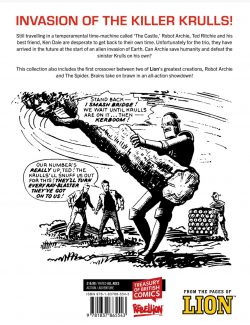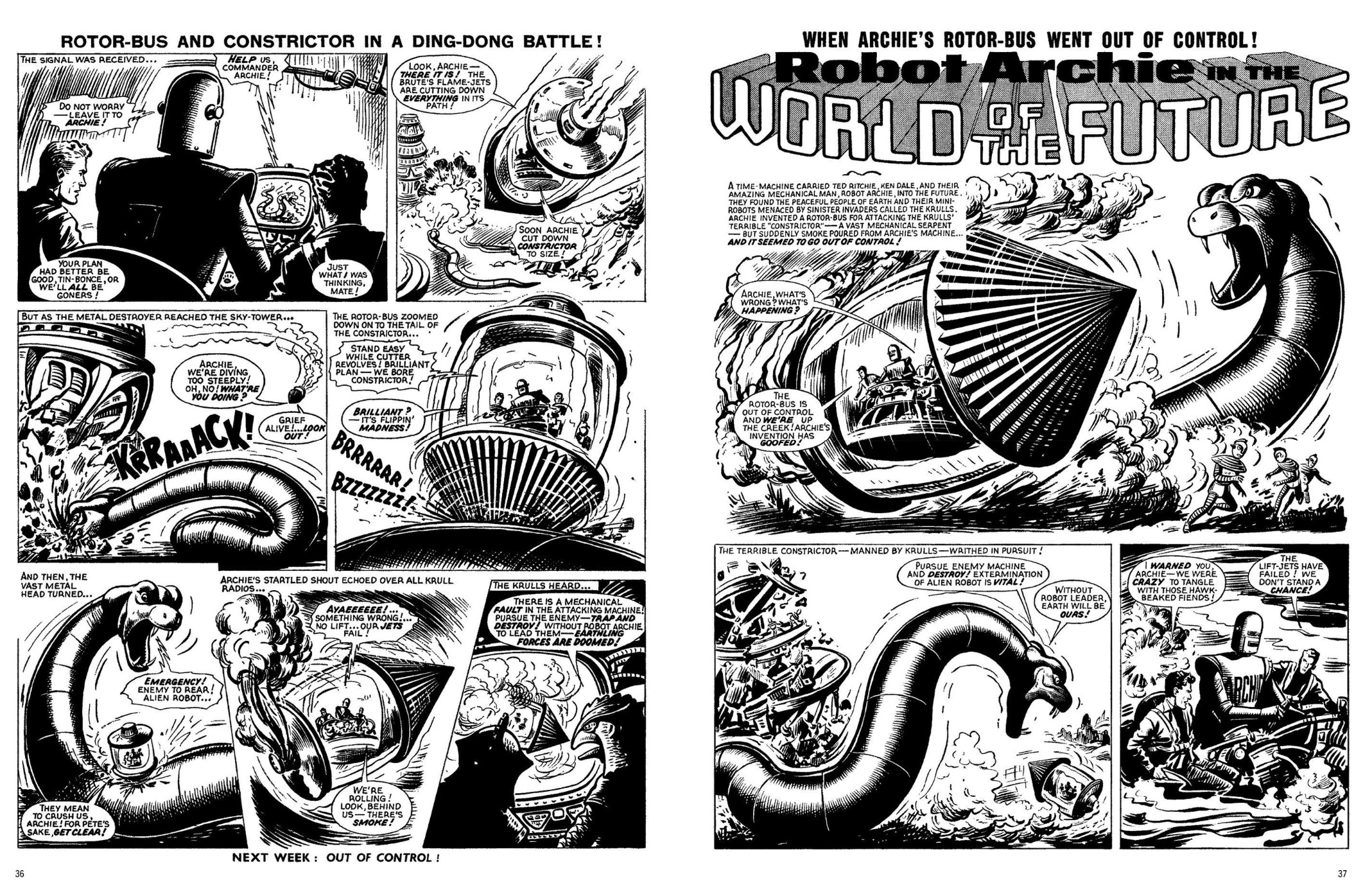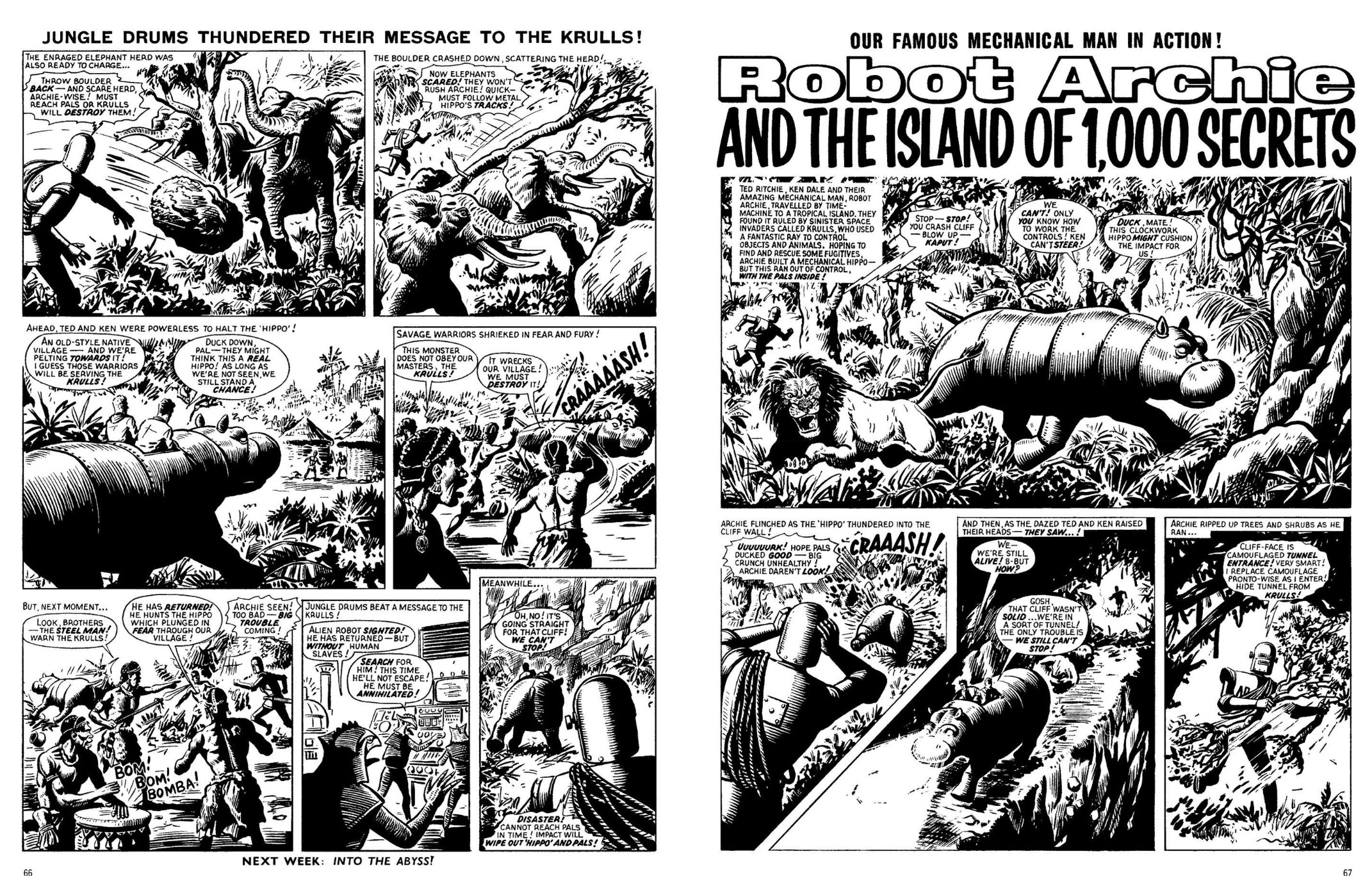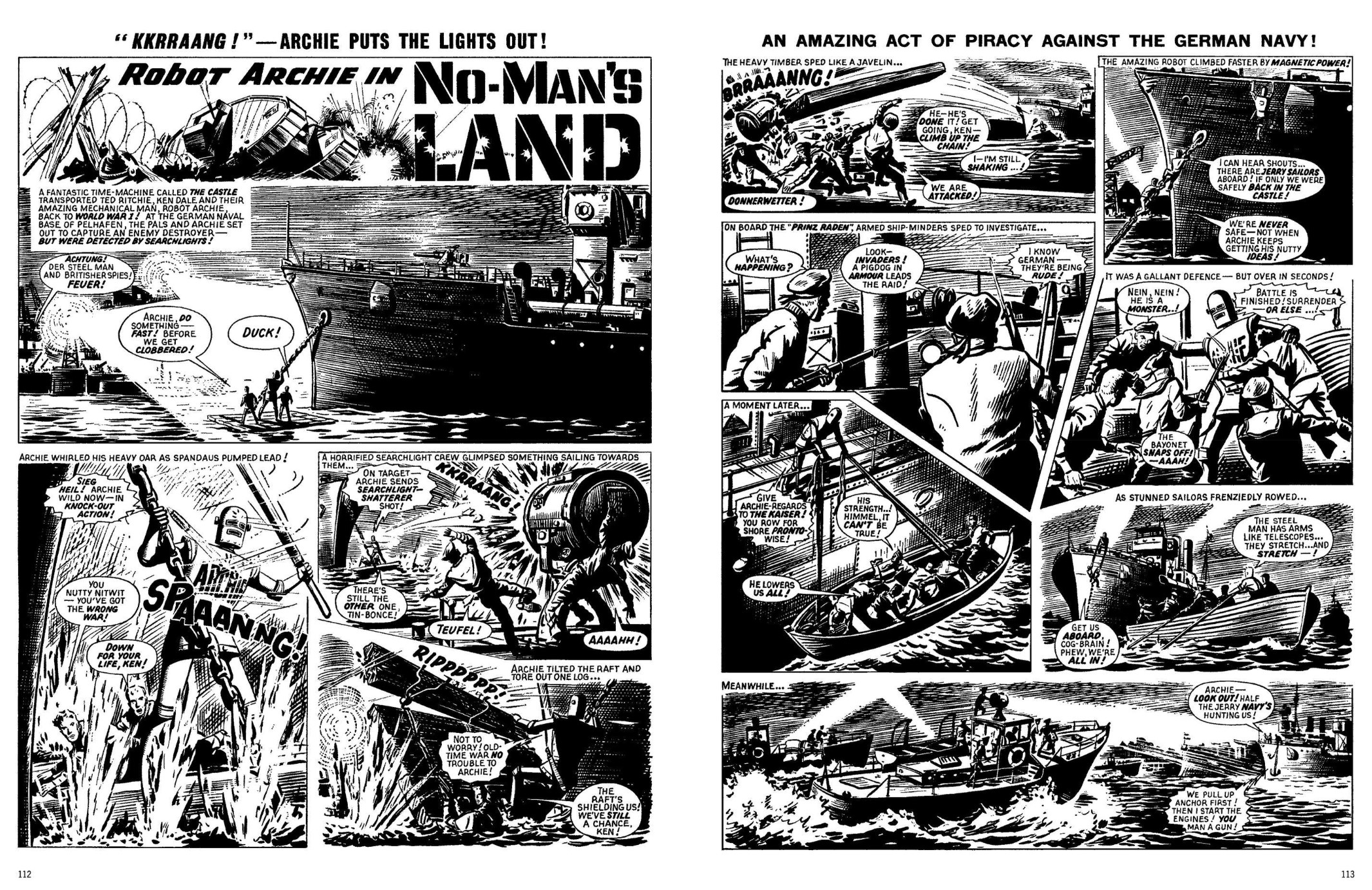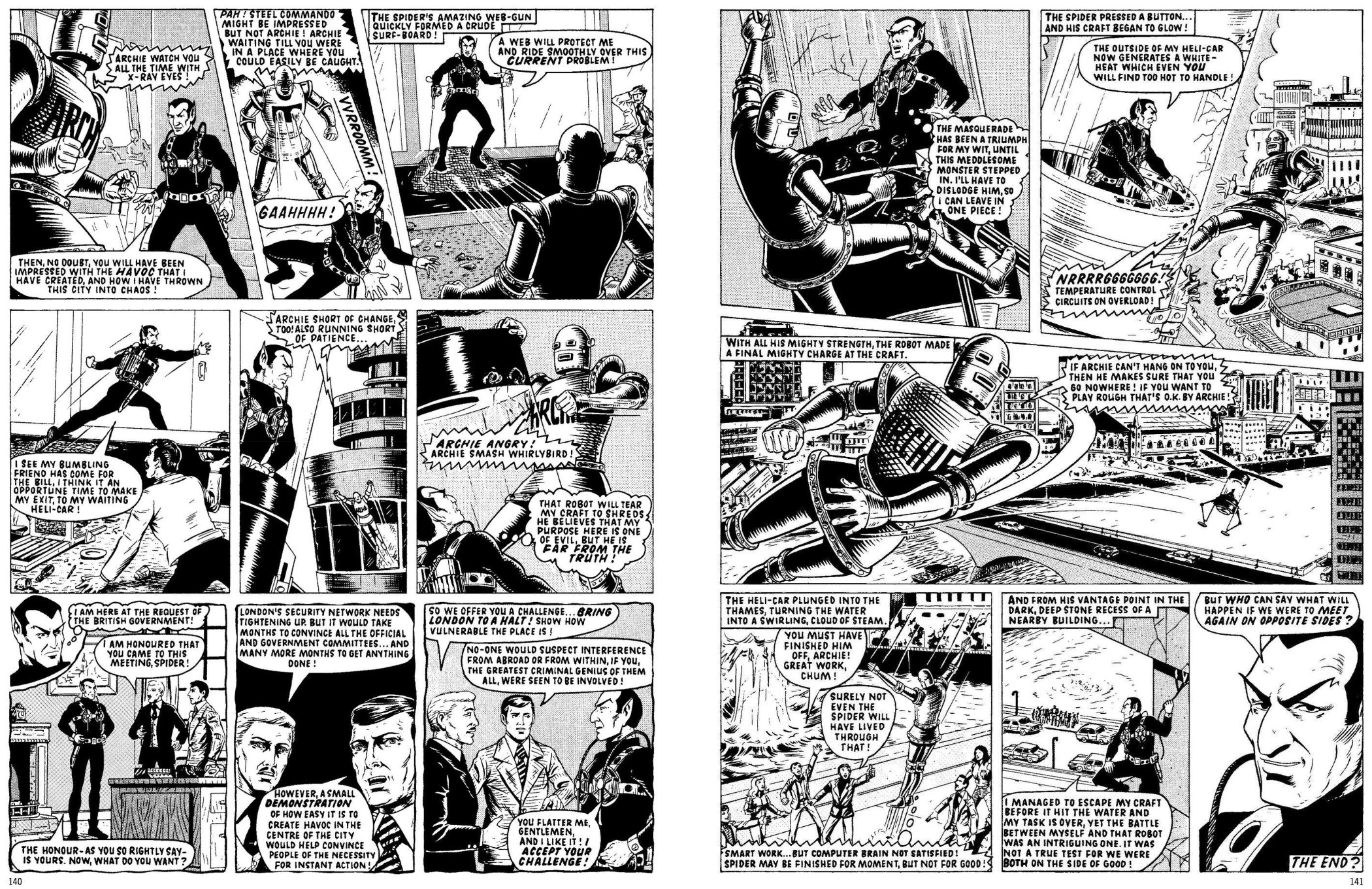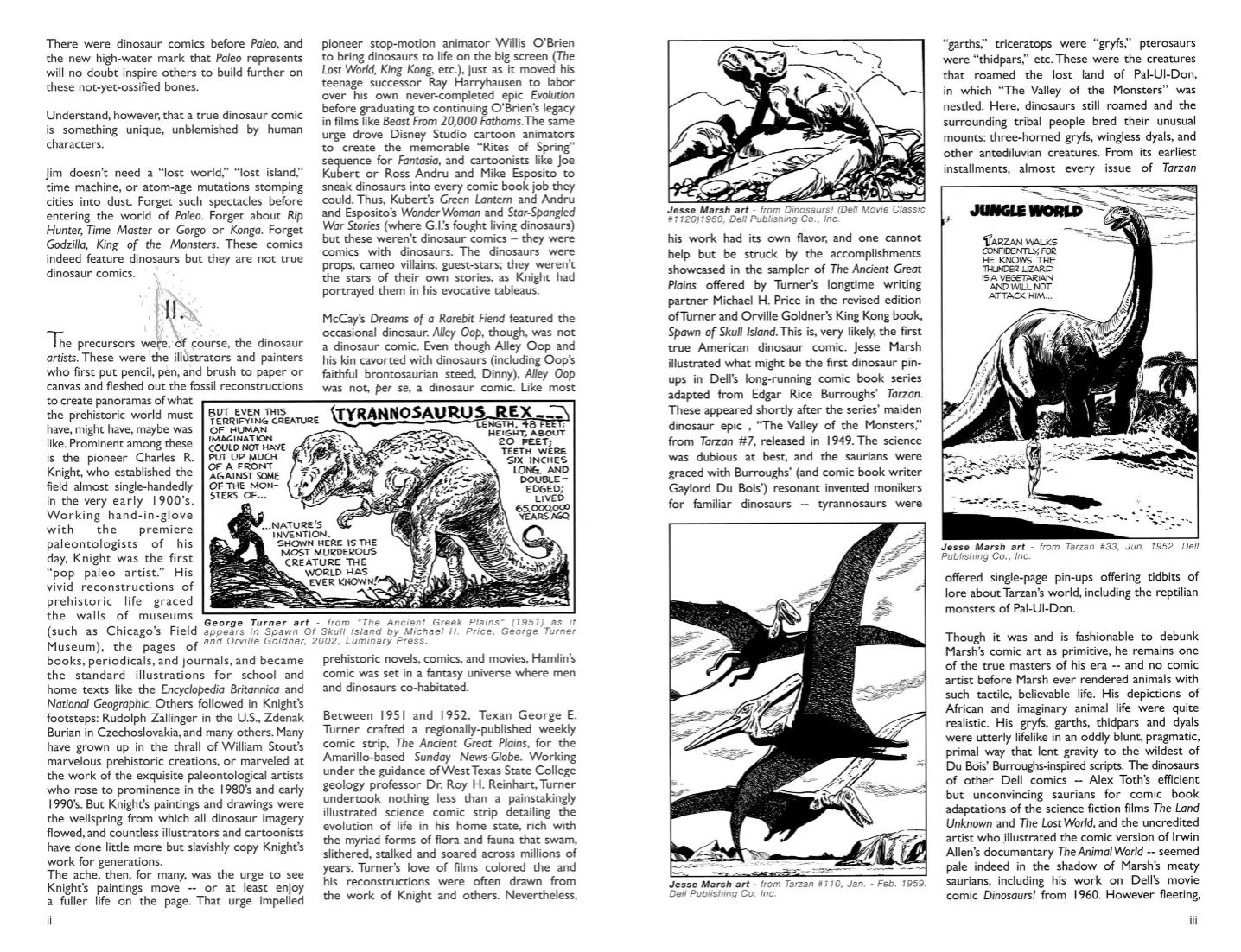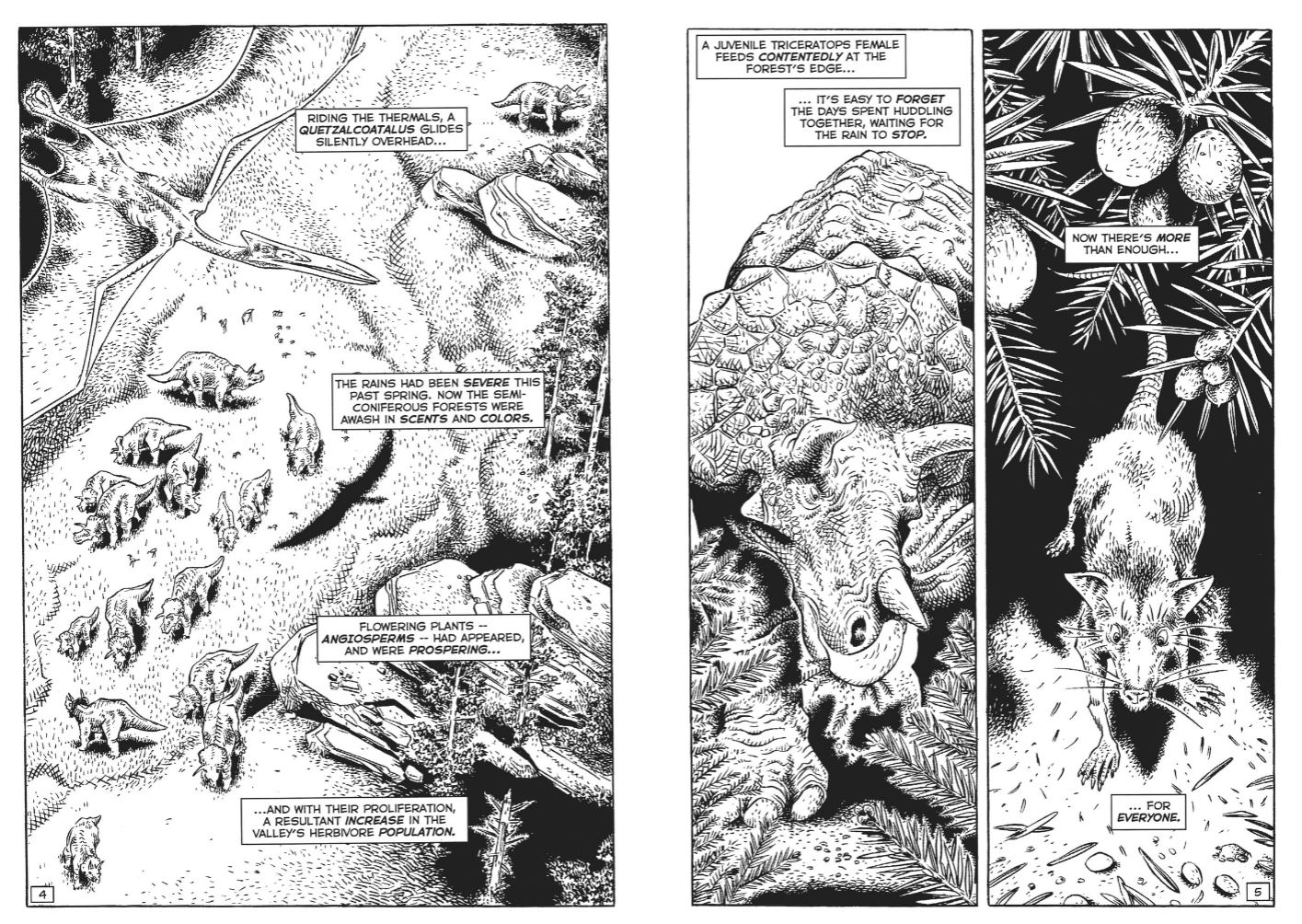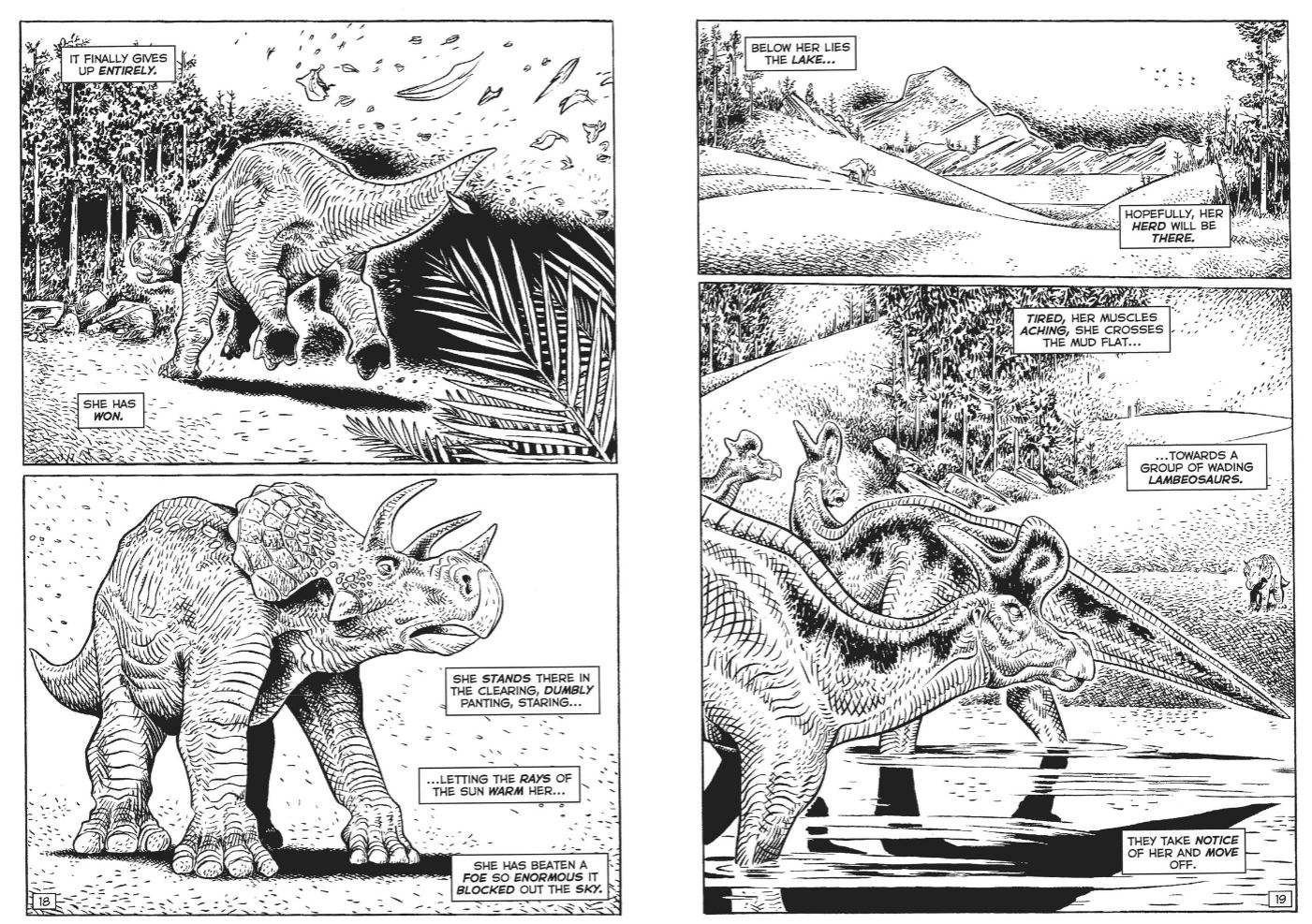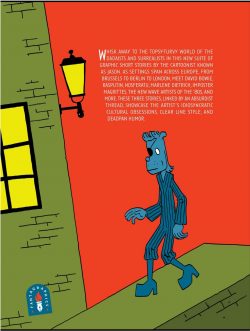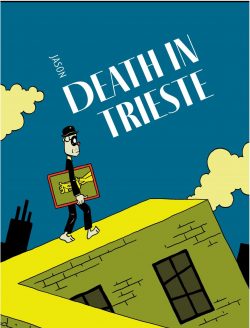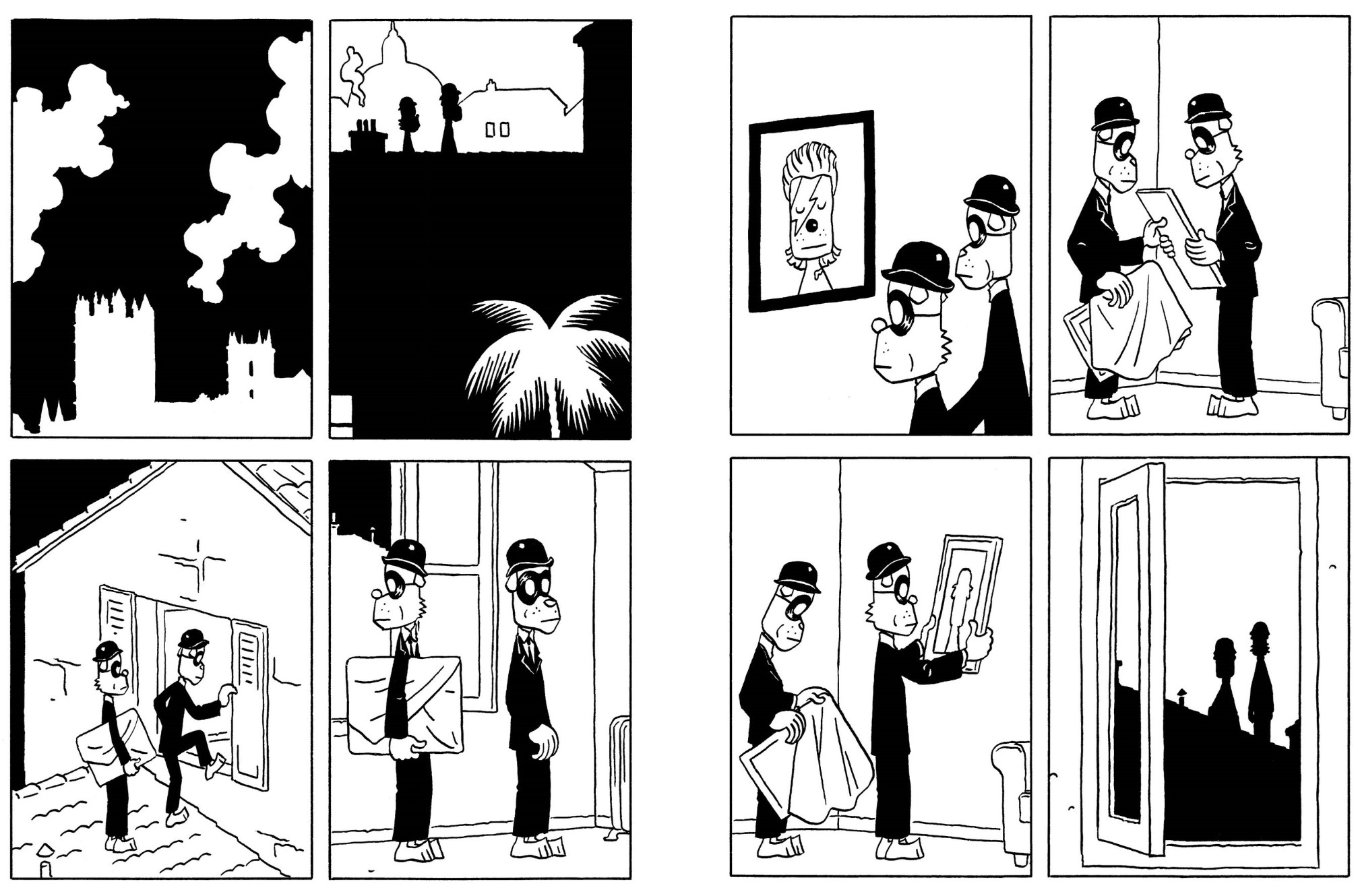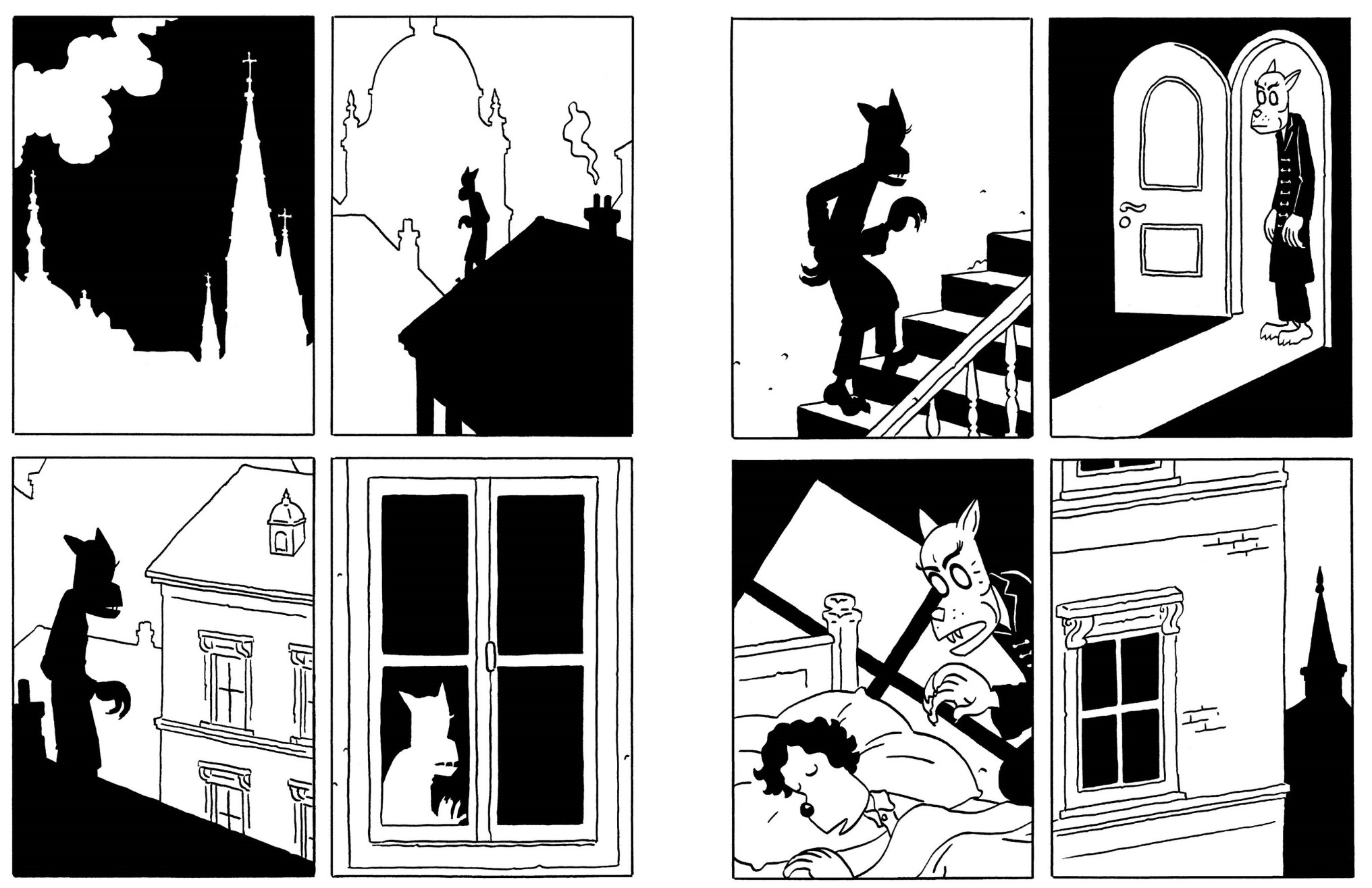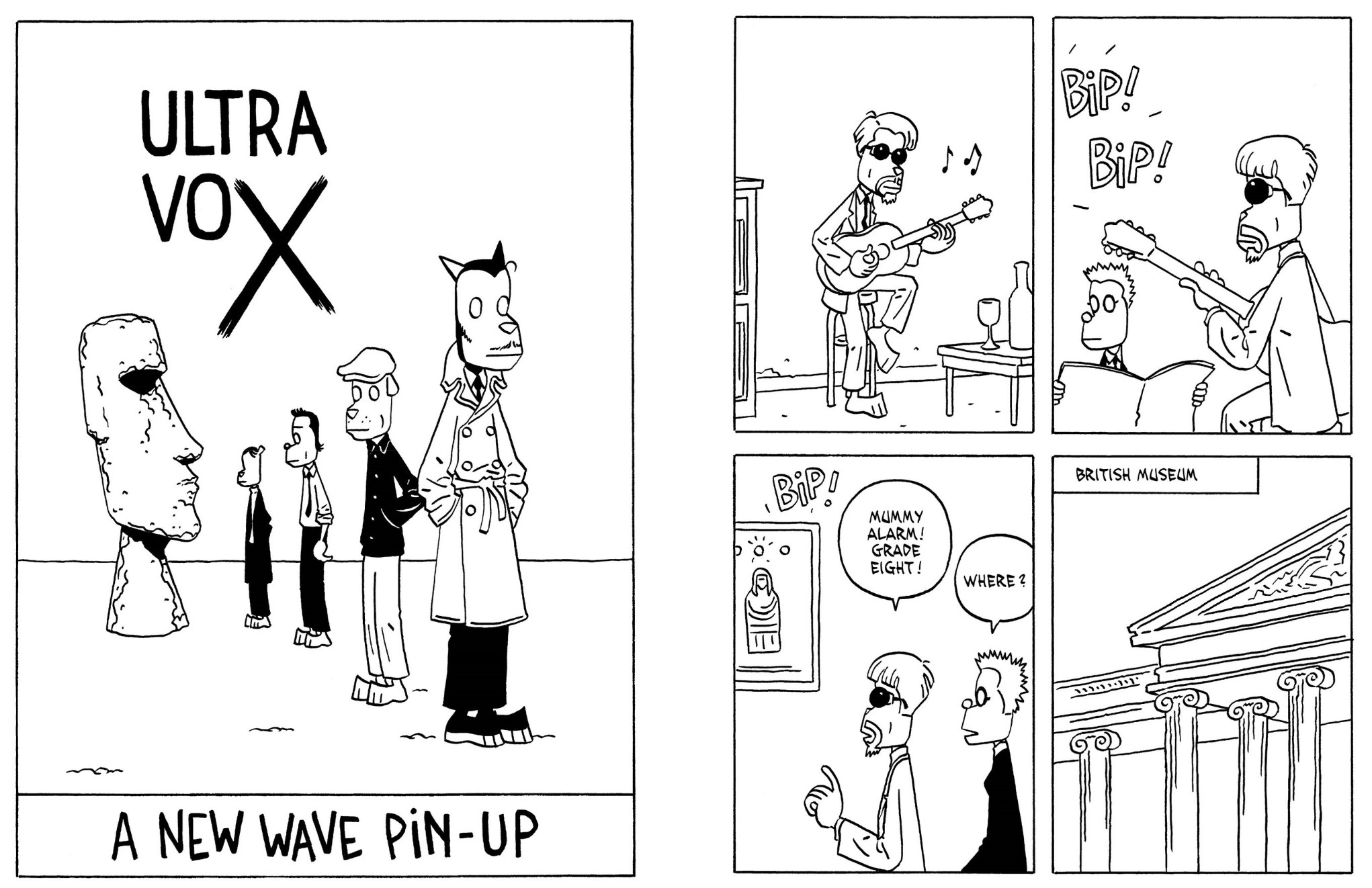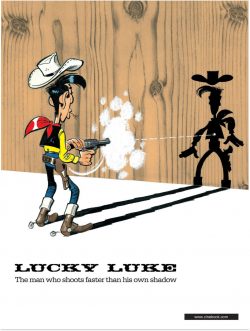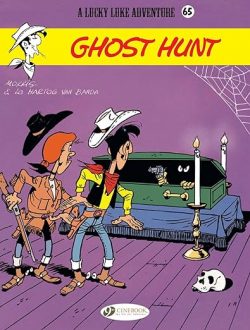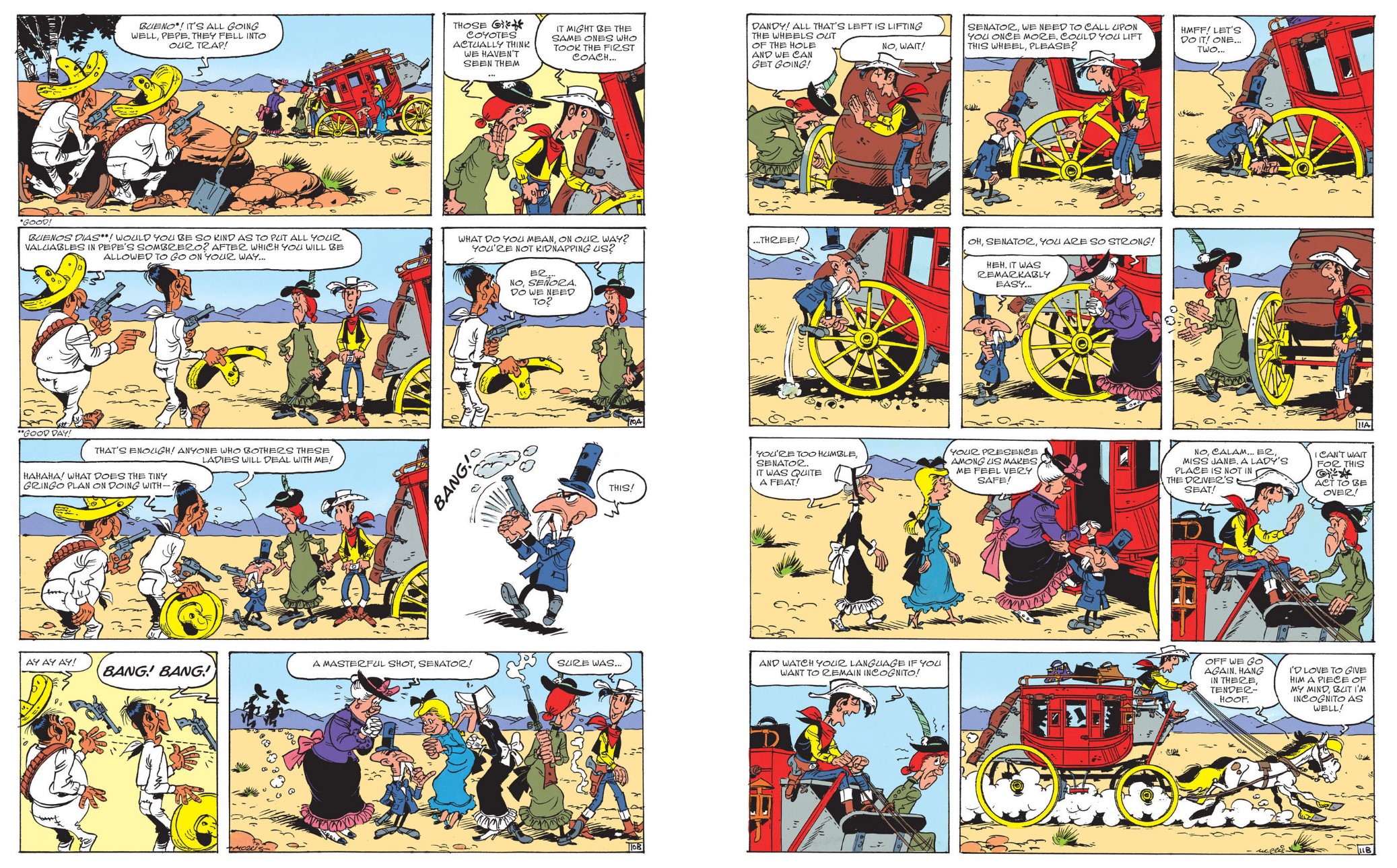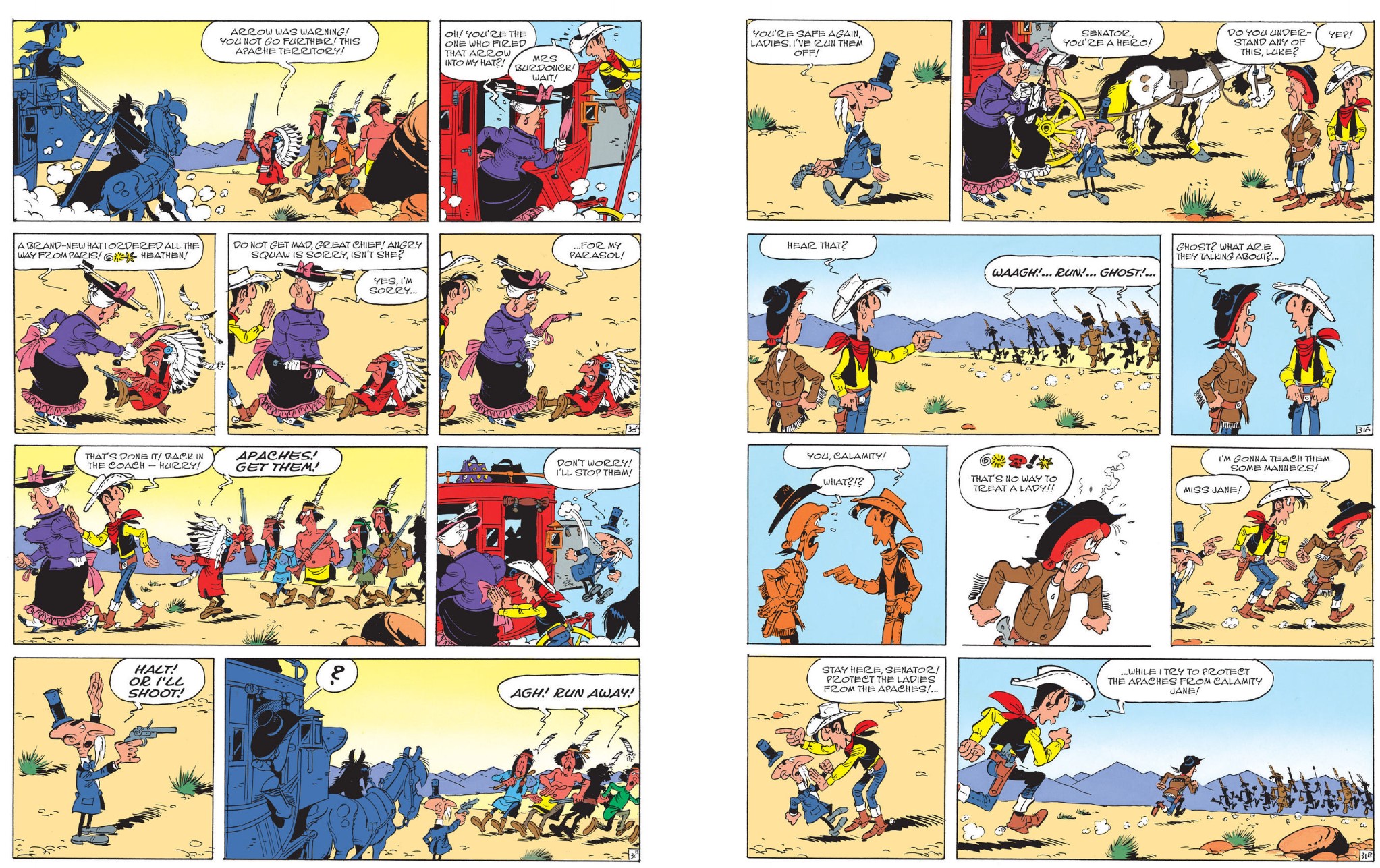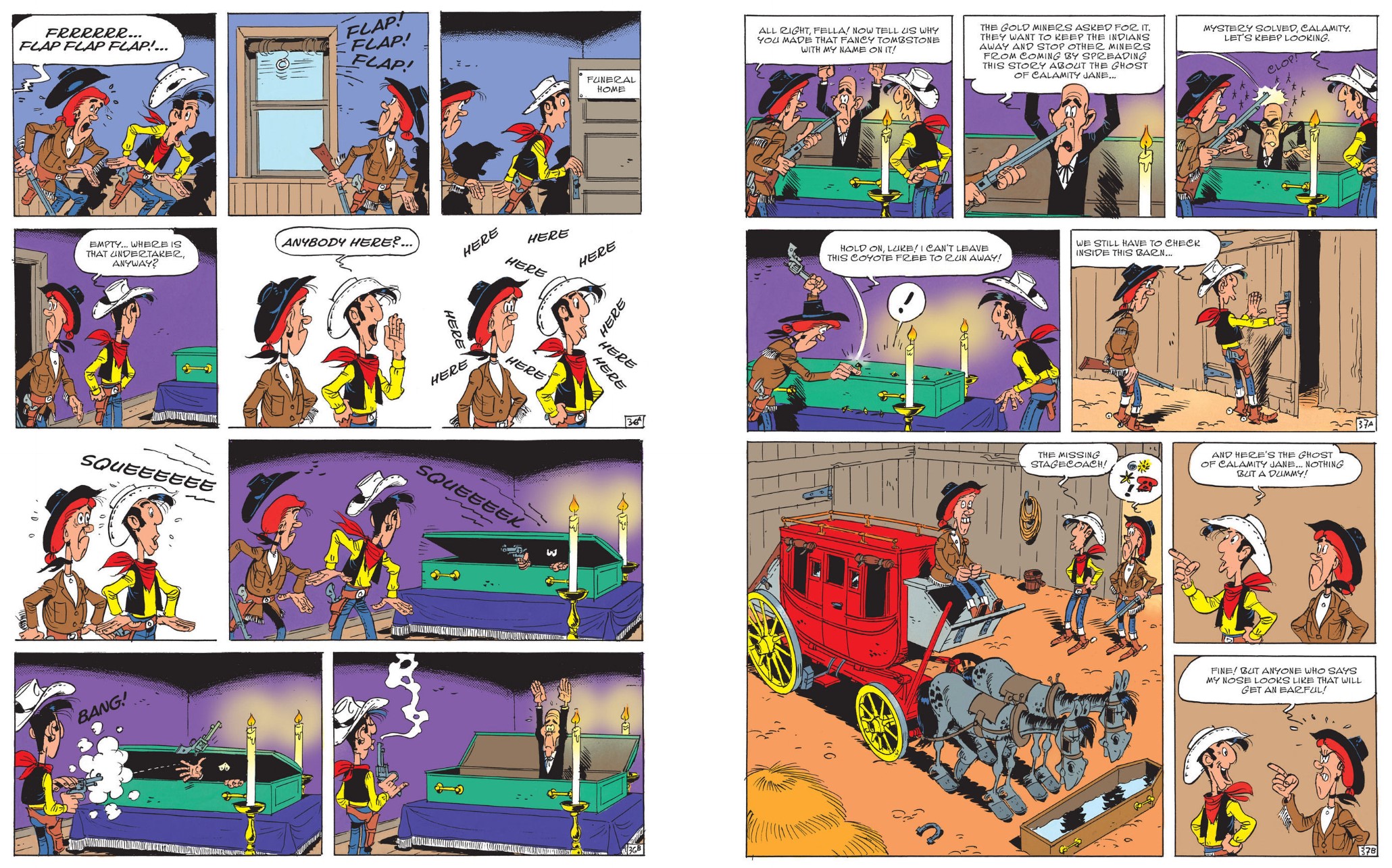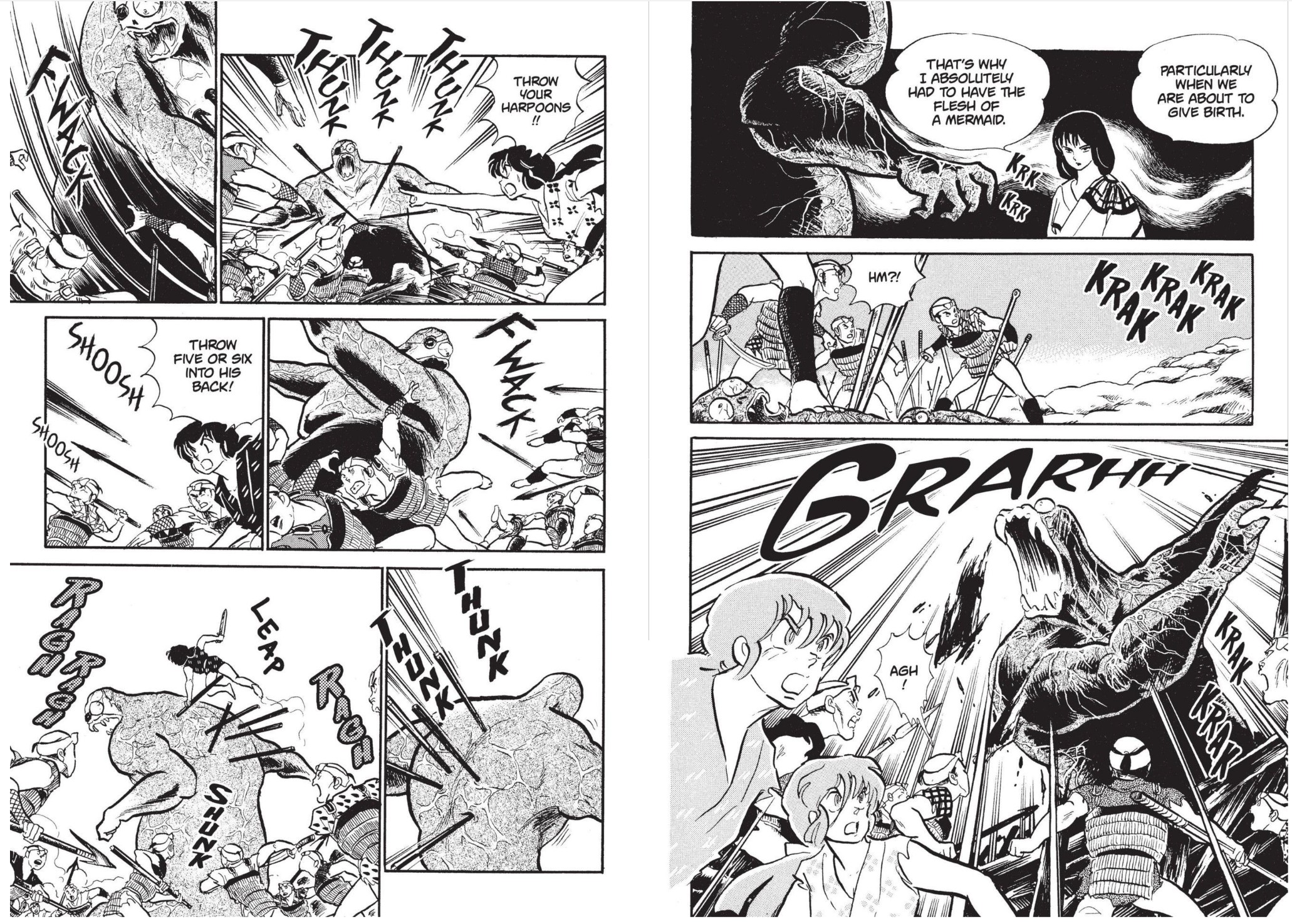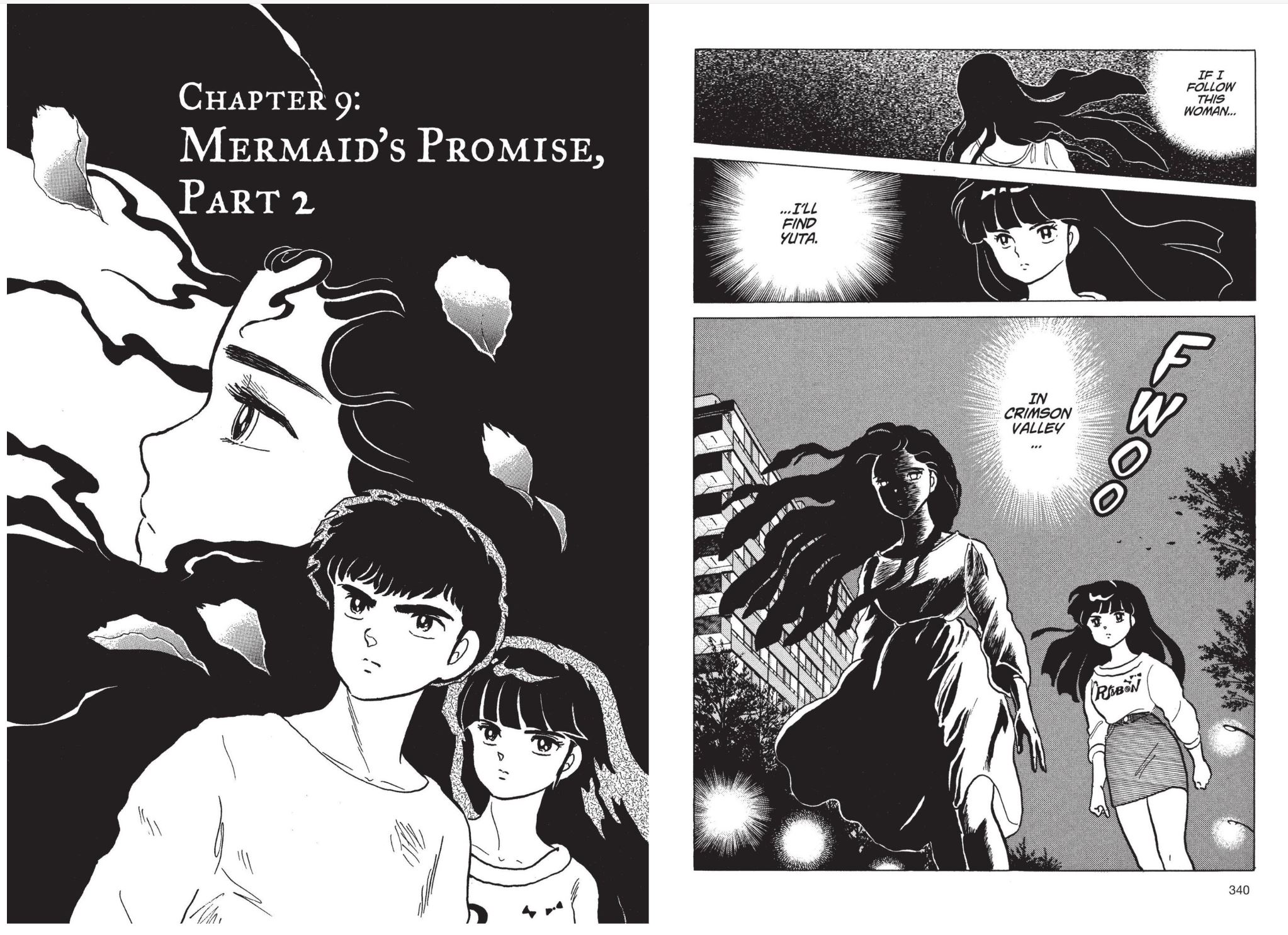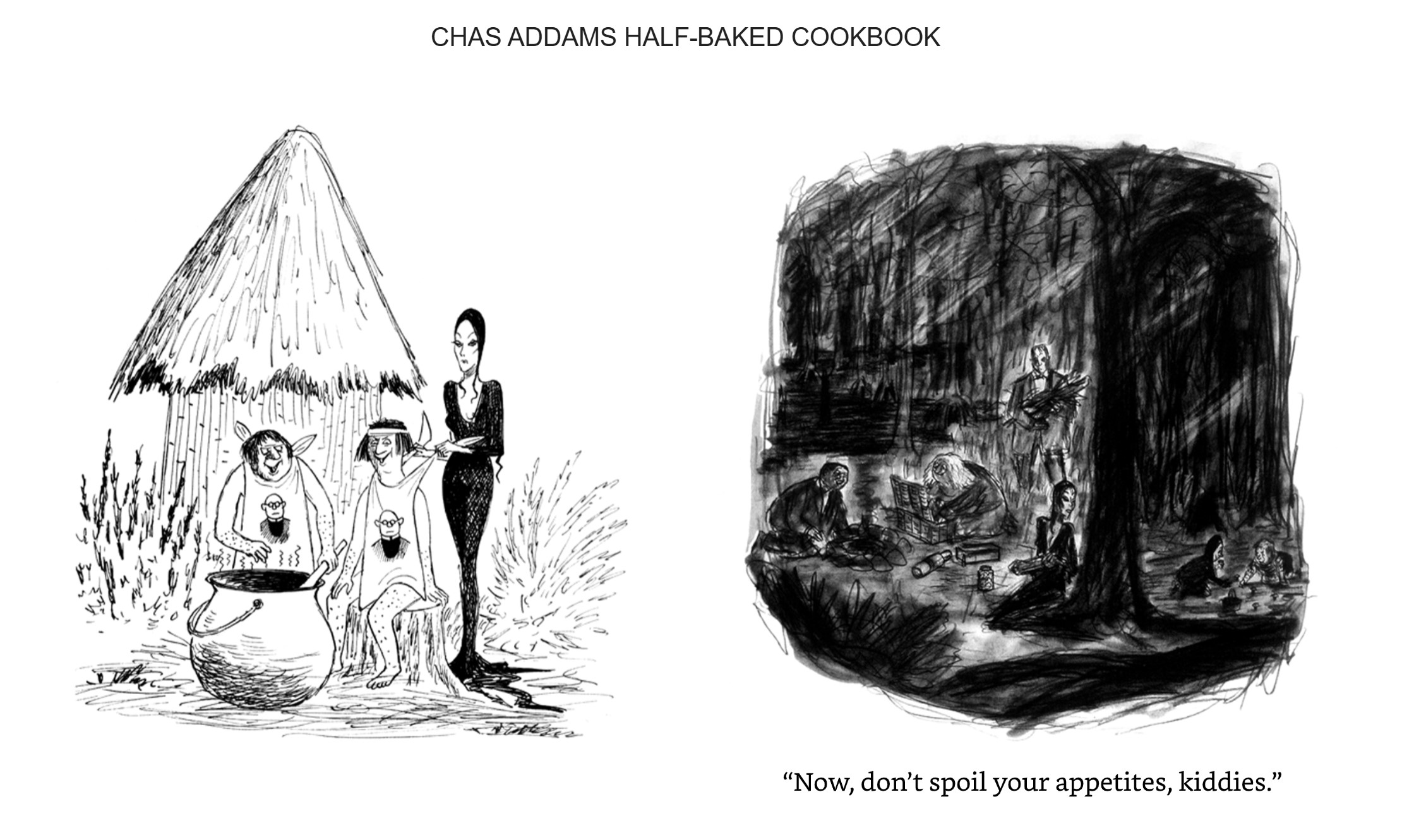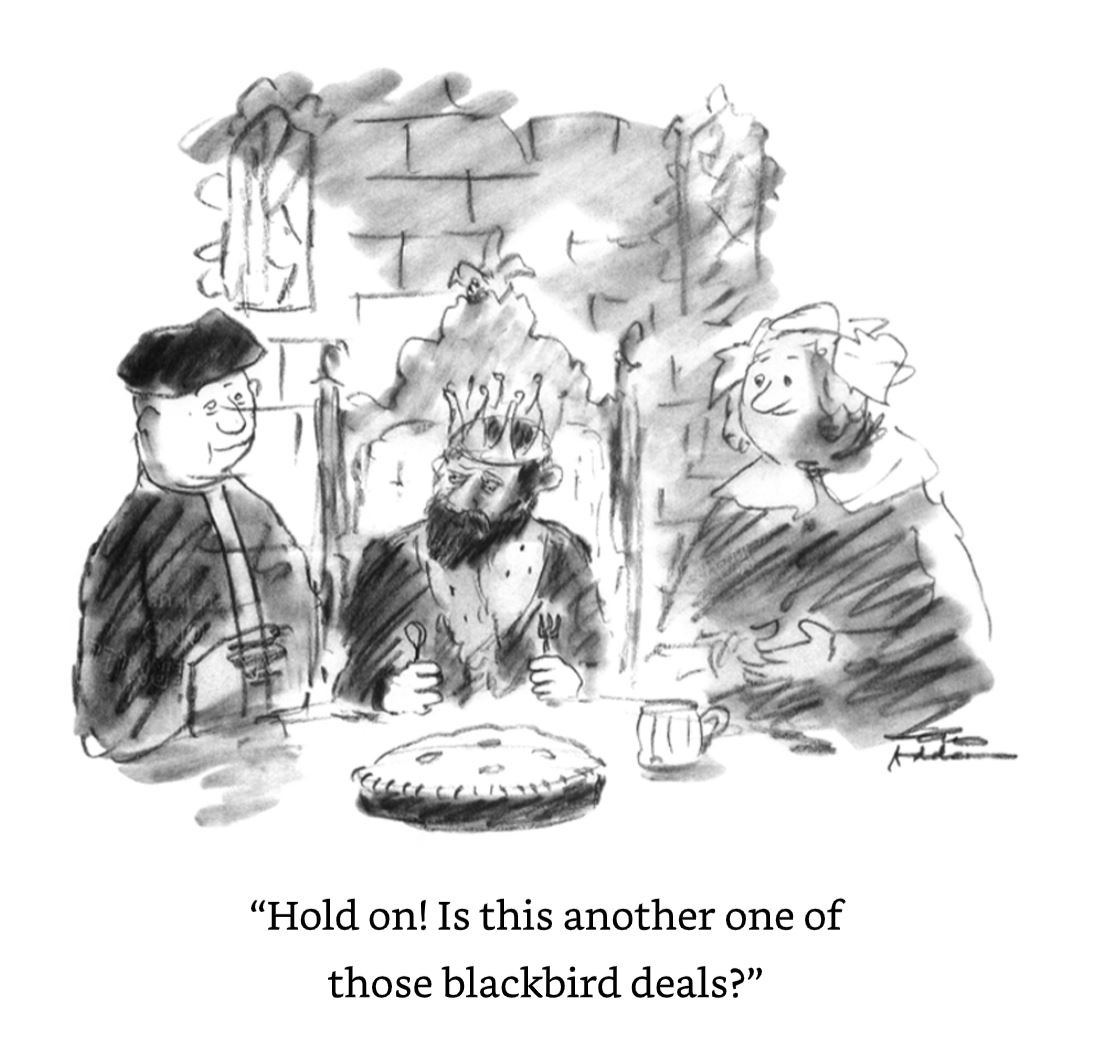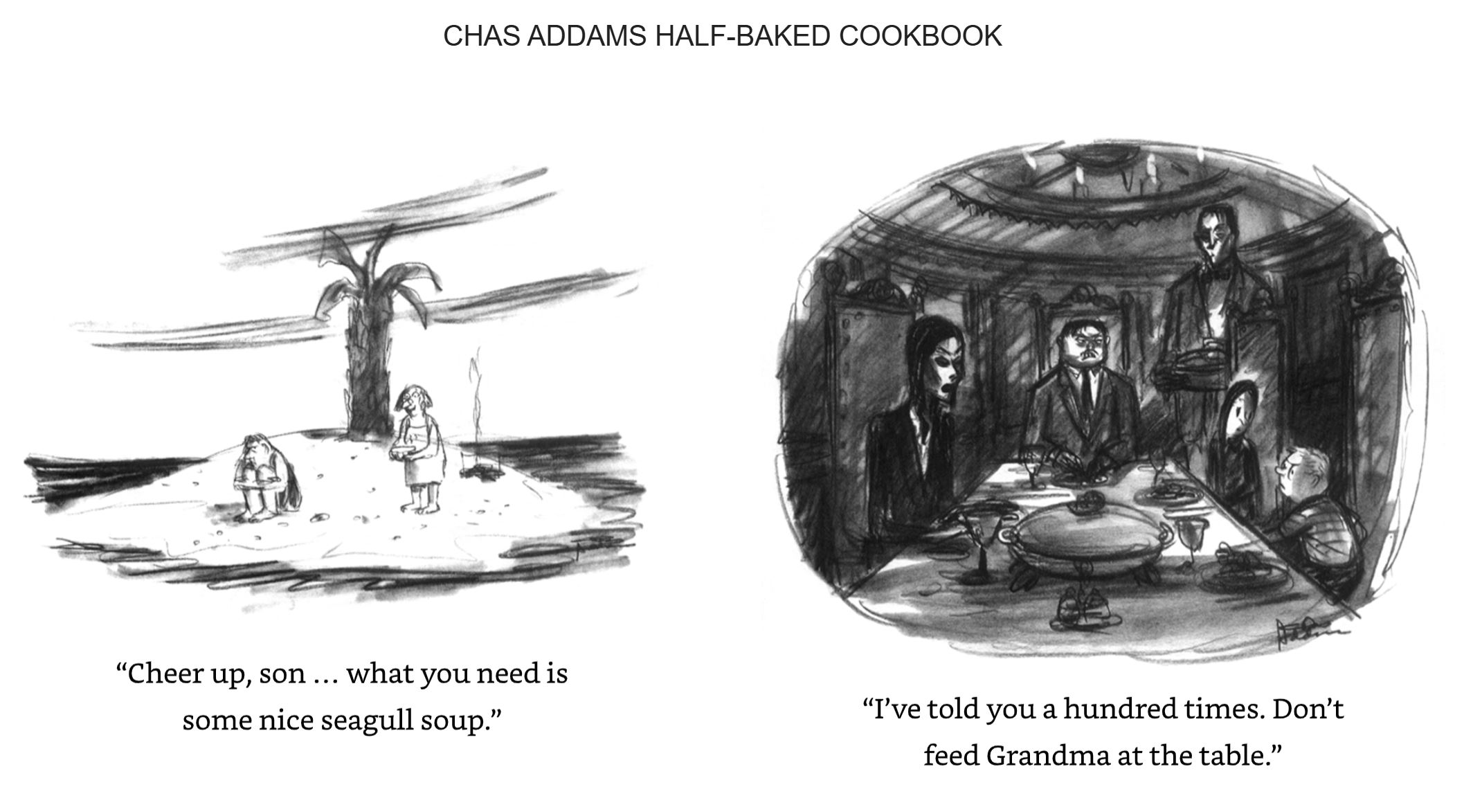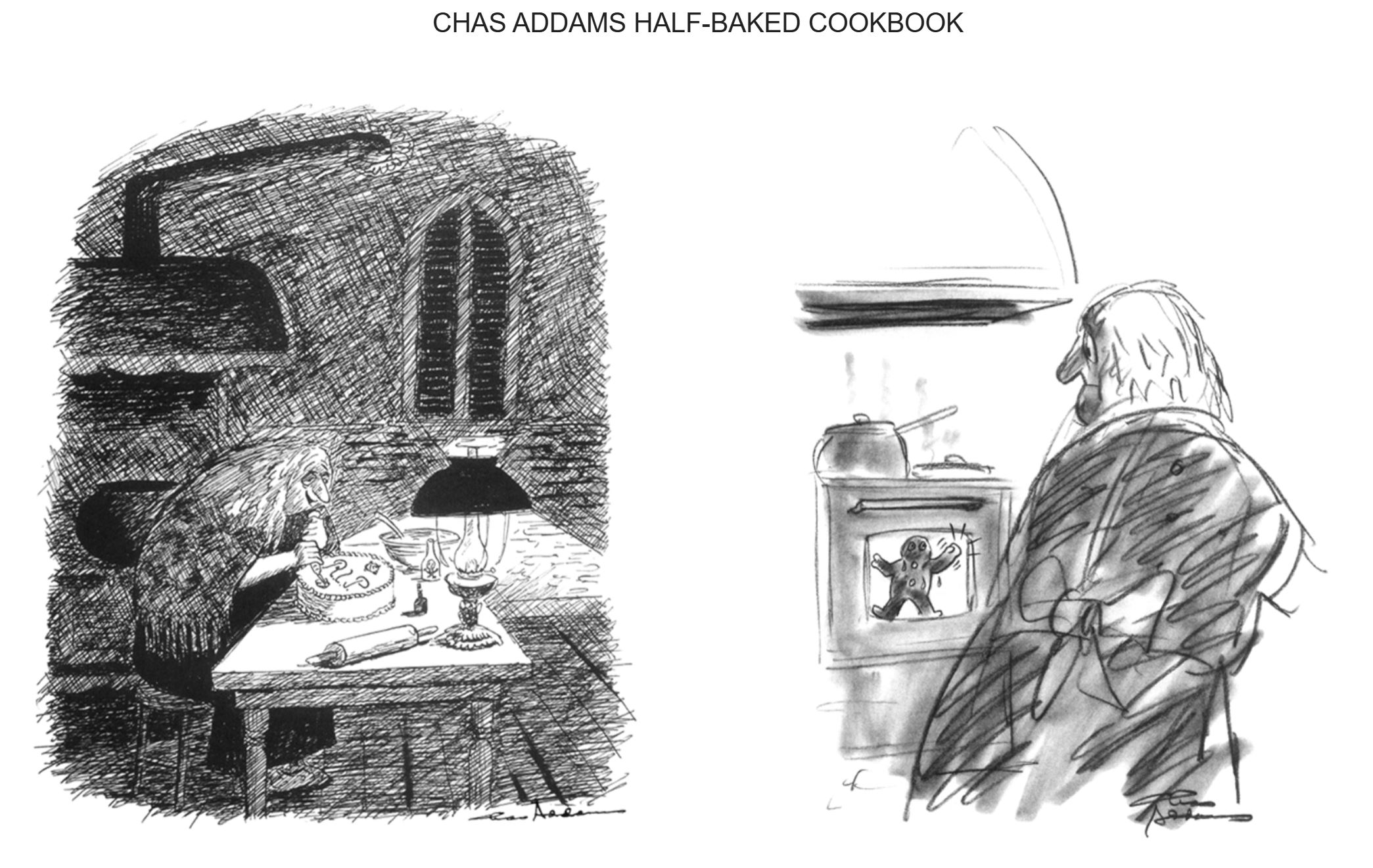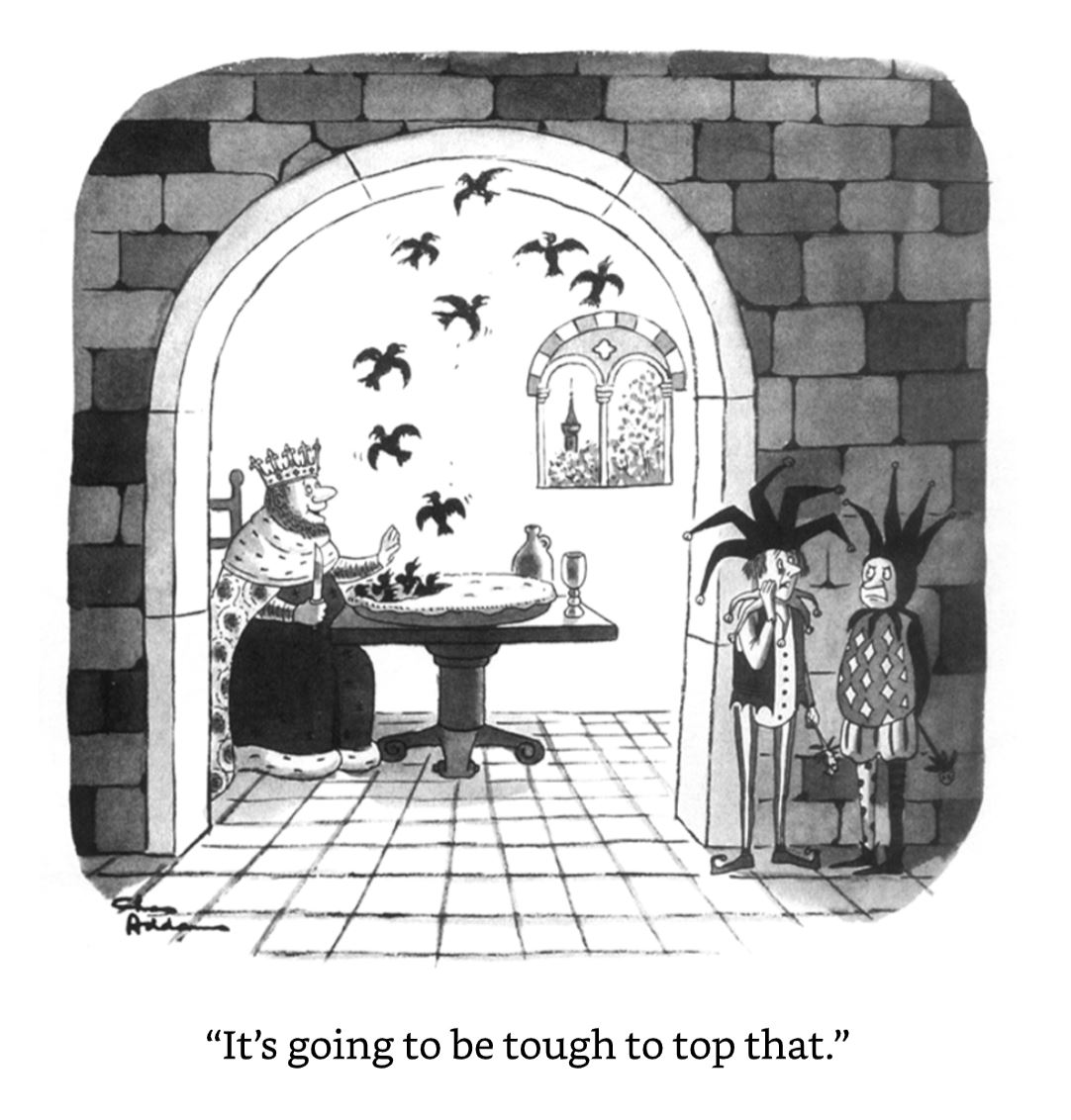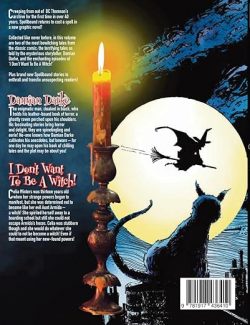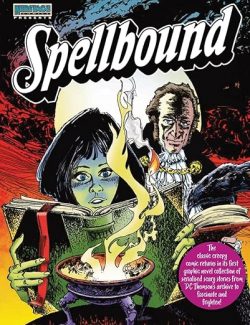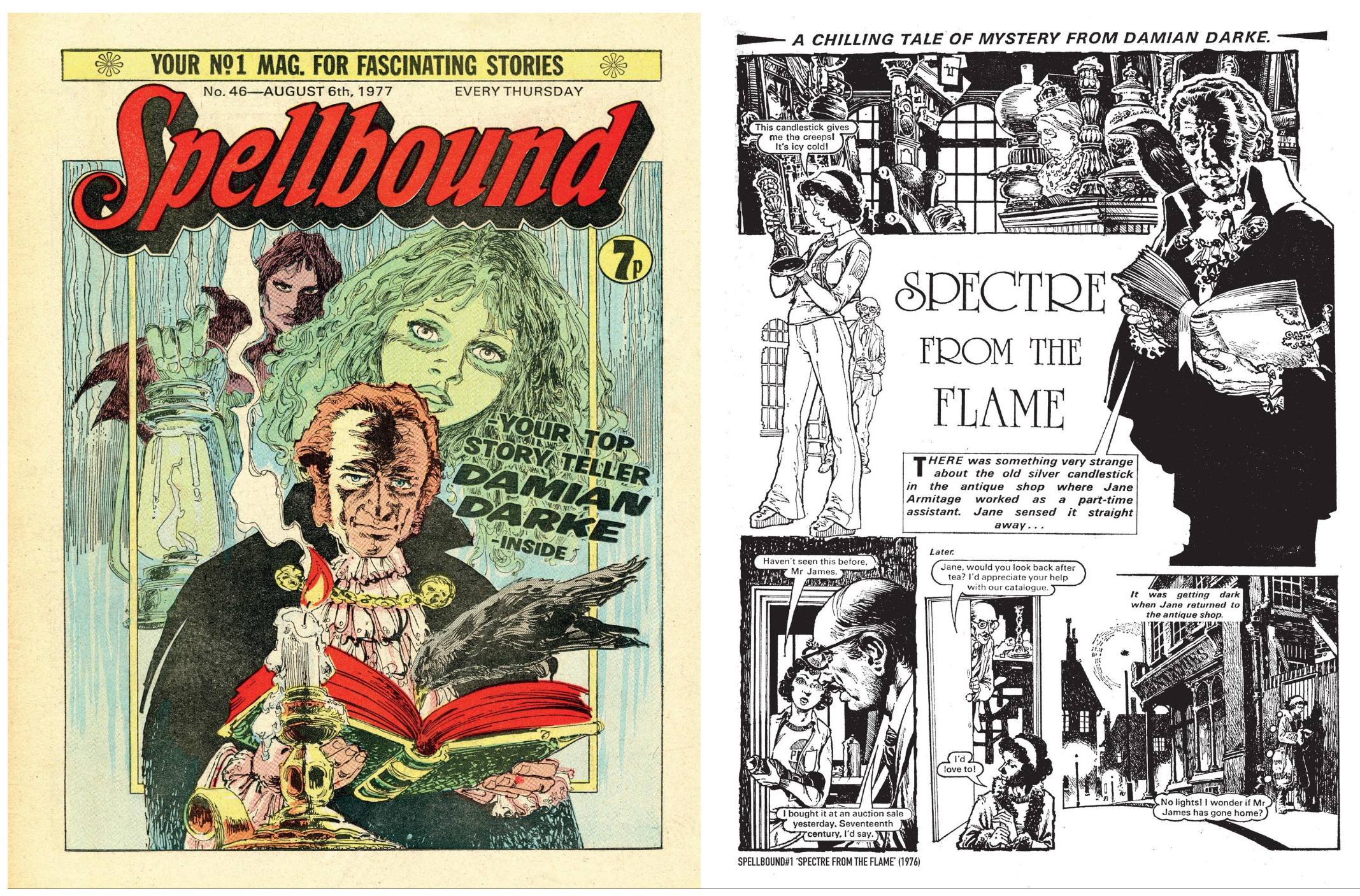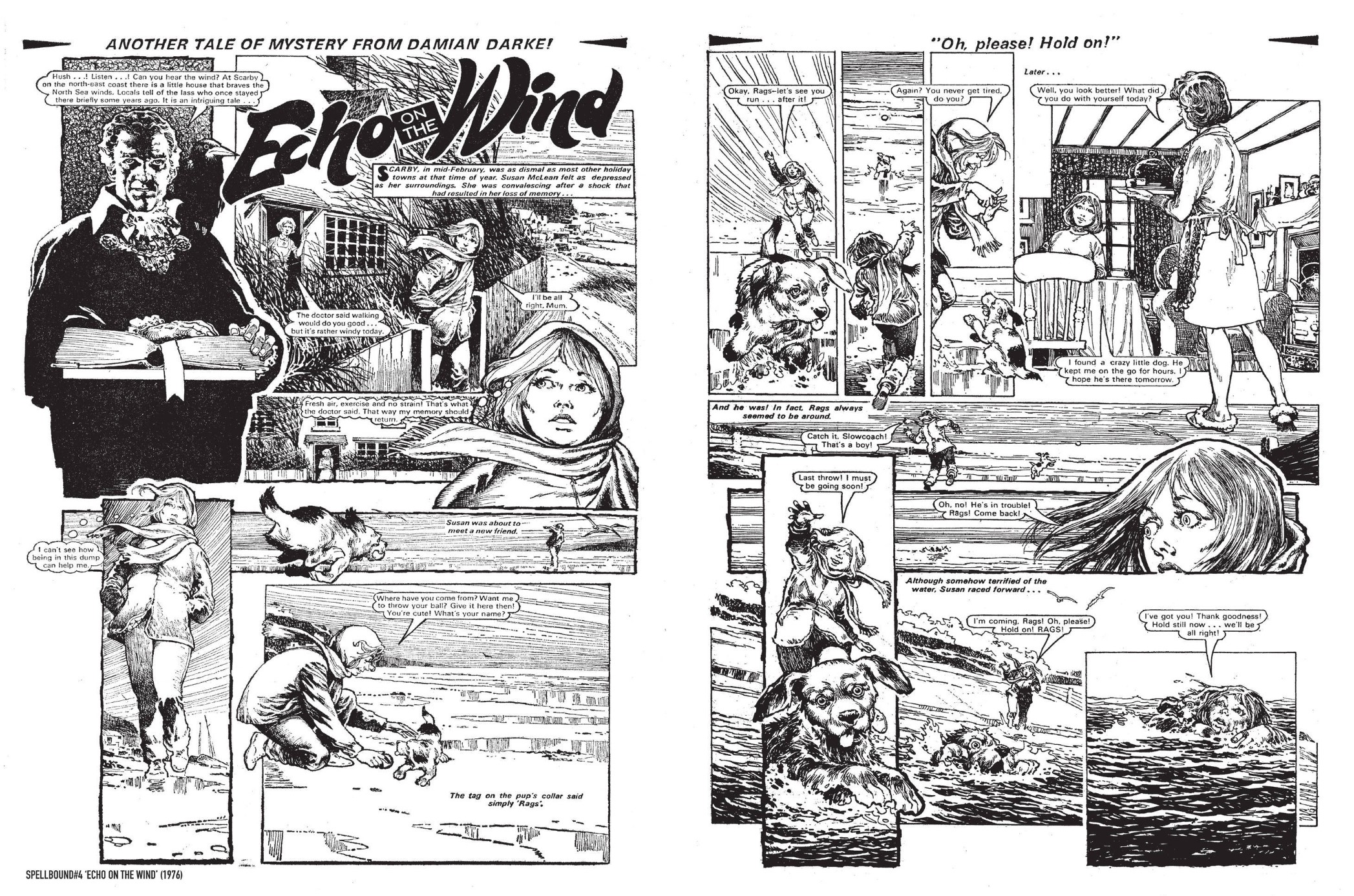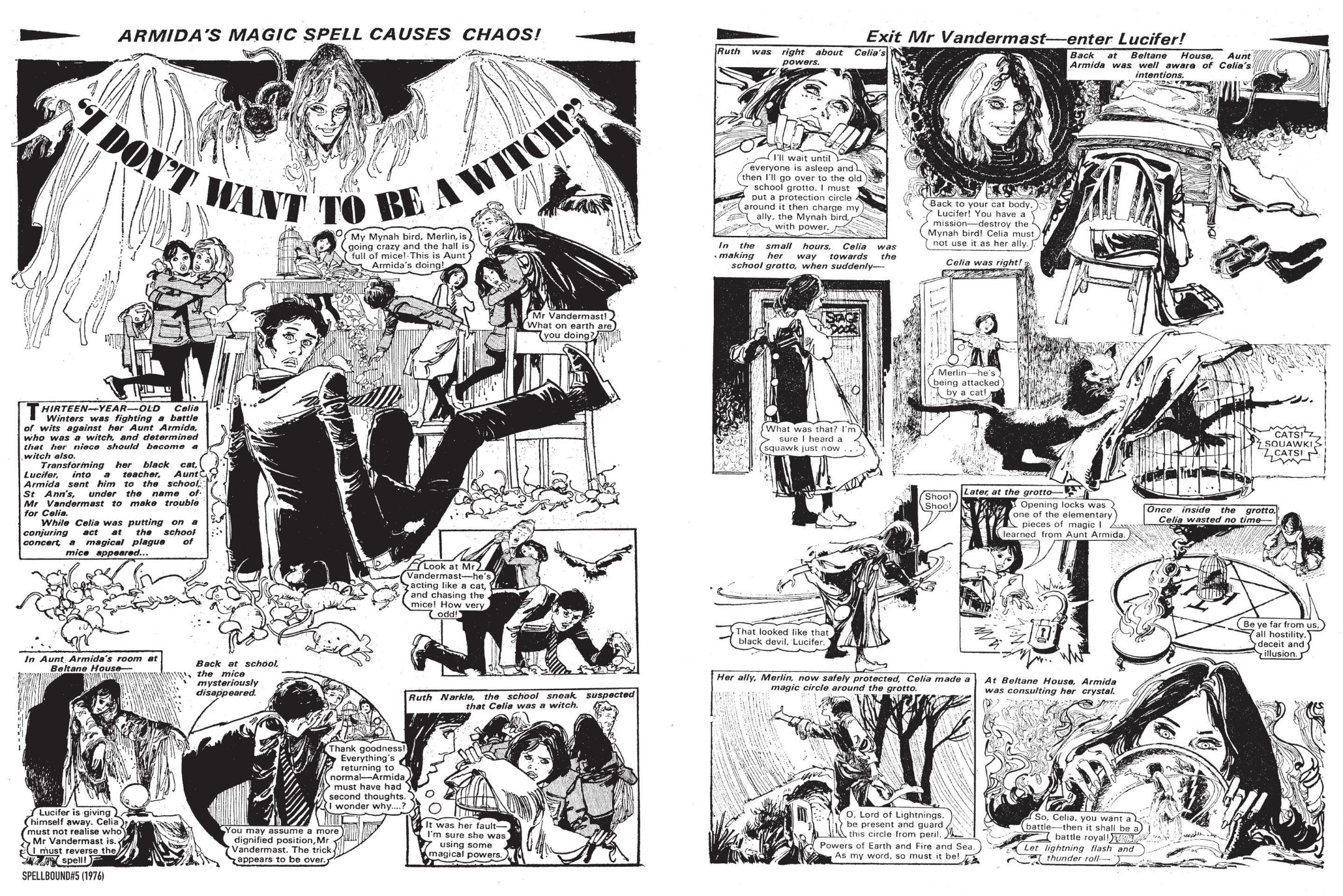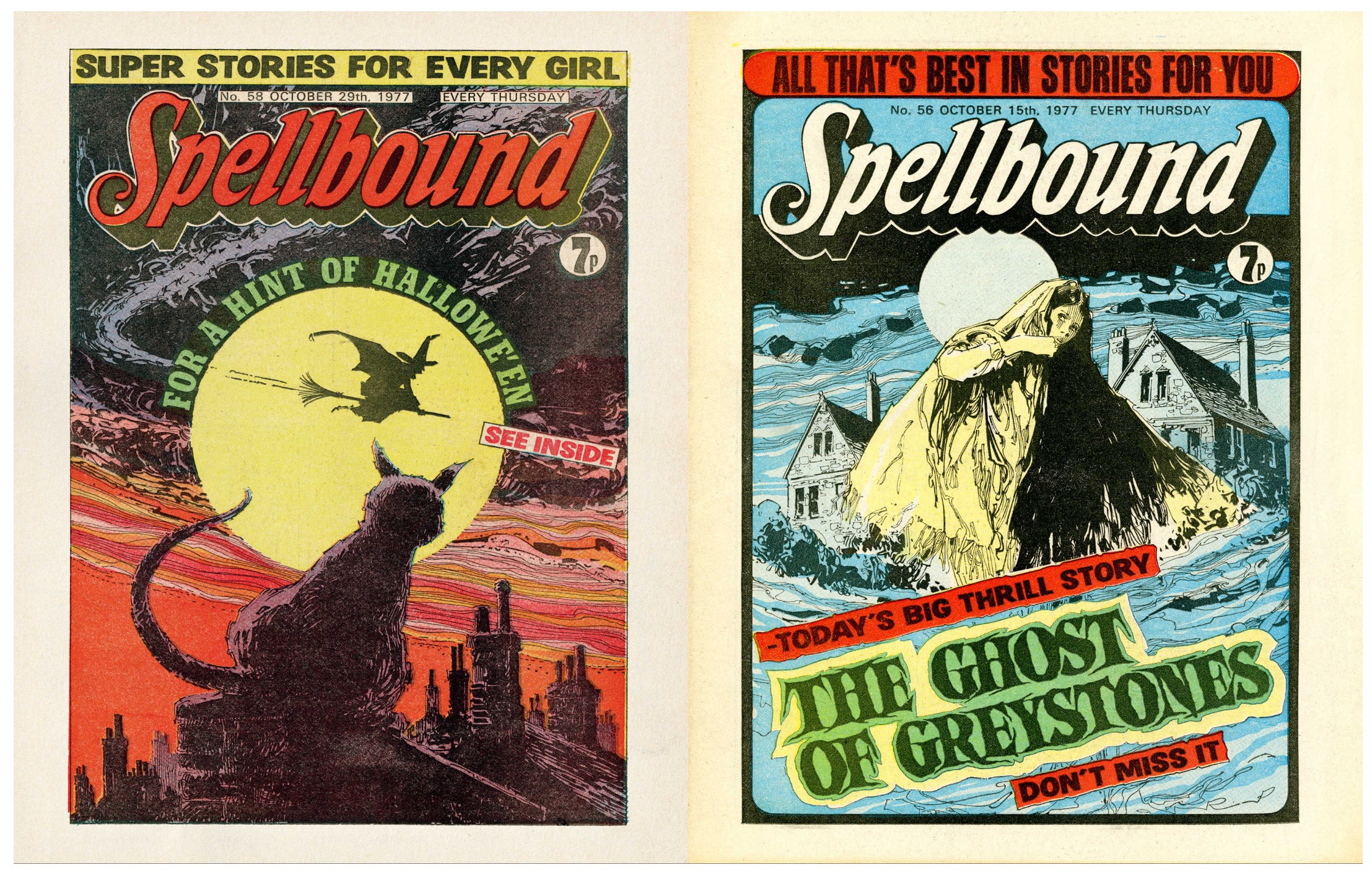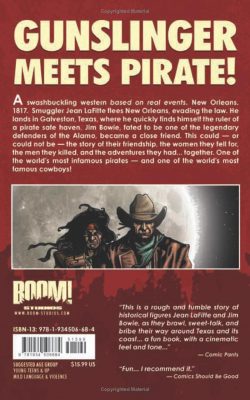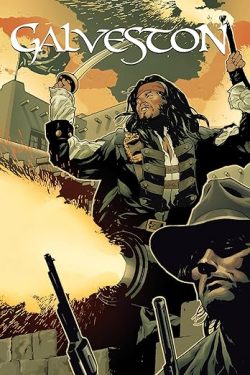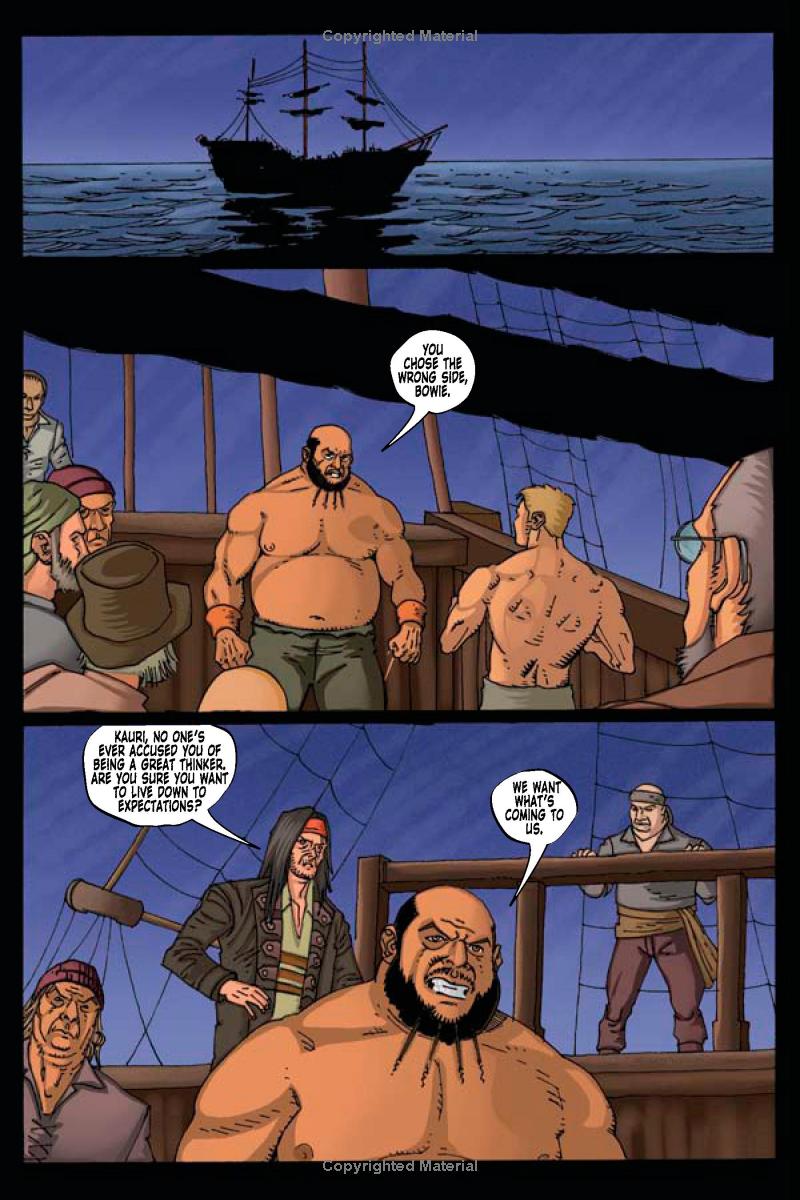
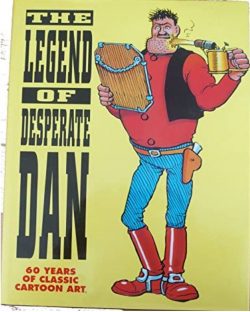
By Dudley D. Watkins, with Charles Grigg, Ken Harrison & various (DC Thomson & Co)
ISBN: 978-0-85116-657-5 (tabloid HB)
This book includes Discriminatory Content produced in less enlightened times.
It needs to be said. Scotland is an ancient and proud nation steeped in unique history, character and culture, and one that has enriched the entire world. That having been said, they all seem to have a rather odd and frequently disturbing fascination with the notion of cowboys…
A timeless case in point is an icon of action and hilarity who began life as a mere half-page feature in the very first issue of The Dandy. The rowdy roughneck (and chin, and chest and…) was first seen fleeing town on December 4th 1937, but has since mellowed, found a family and settled down, He’s still the Strongest Man on Earth and always in trouble because he doesn’t know his own strength…

As seen in the eponymous opening historical section of this colossal tome, ‘The Legend of Desperate Dan’ predates Superman’s debut and owes more to Elzie Segar’s maritime masterpiece Popeye (as seen back then in Thimble Theatre) by way of a countless stampede of Saturday morning movie two-reelers. However Desperate Dan didn’t roam too long on the range and swiftly garnered a family including formidable Aunt Aggie, super-tough nephew Danny, niece Katey, the hard-pressed Mayor, Sheriff and so forth… and lots of put-upon, shell-shocked neighbours usually caught in the catastrophic aftermath of Dan’s latest efforts to help…
Like so many of DC Thompson’s most memorable stars, the Big Guy was the brainchild of Dudley D. Watkins (1907-1969) at his most imaginative and culturally adroit. A tireless and prolific illustrator equally adept at comedy, adventure, educational and drama storytelling, Watkins’ style more than any other shaped the pre and especially postwar look and form of the Scottish publishing giant’s comics output. Yes, the company AND the cowboy…
Watkins started life in Manchester and Nottingham as an artistic prodigy prior to entering Glasgow College of Art in 1924. Before long he was advised to get a job at expanding, Dundee-based Thomson’s, where a 6-month trial period illustrating prose “Boys’ Papers” stories led to comic strip specials and some original cartoon creations. Percy Vere and His Trying Tricks and Wandering Willie, The Wily Explorer made him the only contender for both lead strips in a bold new project conceived by Robert Duncan Low (1895-1980). Managing Editor of Children’s Publication. Between 1921 – 1933, Low launched the company’s “Big Five” story papers for boys: Adventure, The Rover, The Wizard, The Skipper and The Hotspur. In 1936, he created the “Fun Section”: a landmark 8-page comic strip supplement for national newspaper The Sunday Post. This illustrated accessory – prototype and blueprint for every comic the company subsequently released – was launched on 8th March. From the outset, The Broons and Oor Wullie were the uncontested headliners… and both illustrated by Watkins. The other features included Chic Gordon’s Auchentogle, Allan Morley’s Nero and Zero, Nosey Parker and others. These pioneering comics laid the groundwork for the company’s next great leap. In December 1937 Low launched DC Thomson’s first weekly all-picture strip comic, The Dandy. Amidst the serried rank of funsters was a half-page western gag strip. It related the riotous outrages of a mean desperado dubbed Dan…
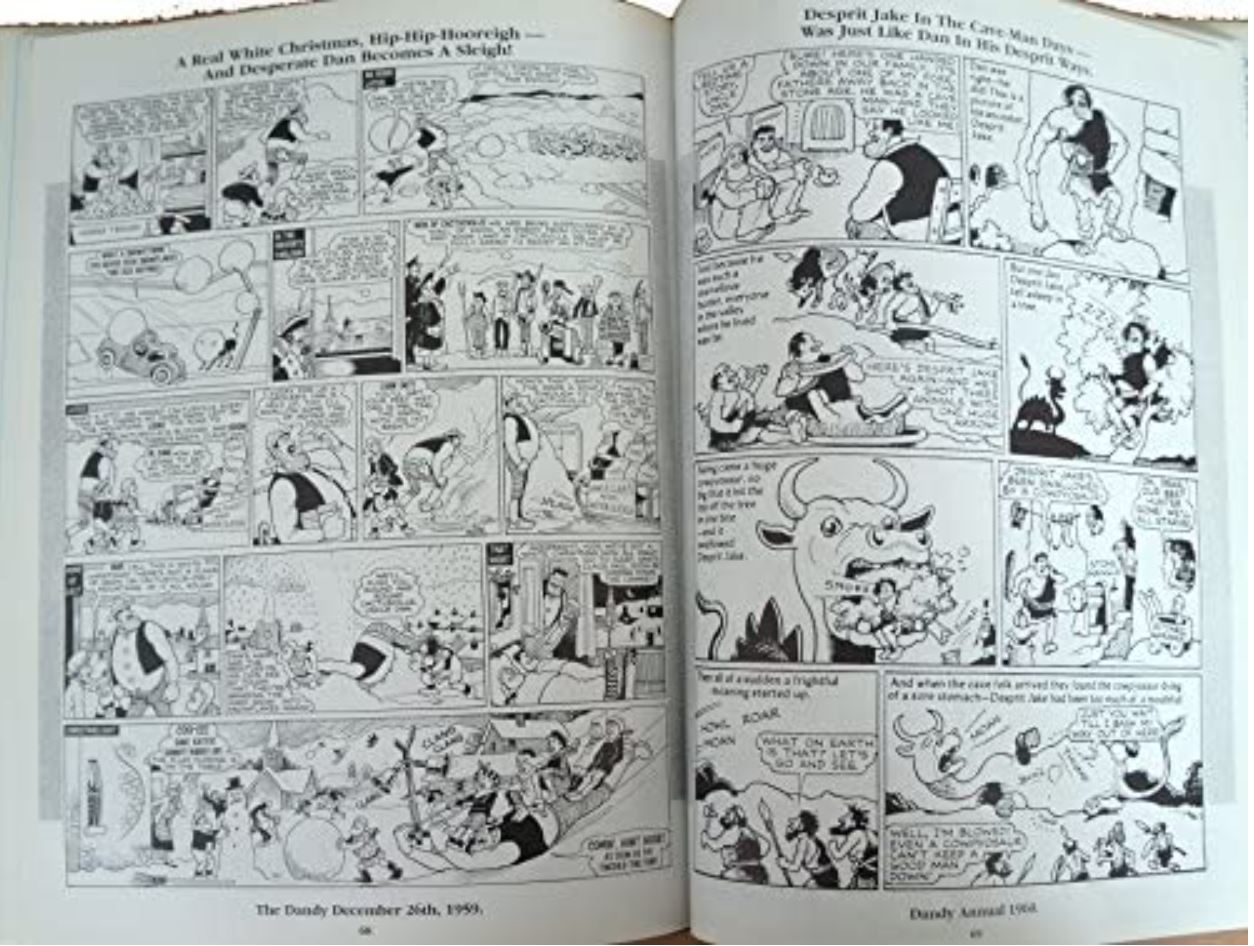
Dan was extremely popular and in 1939 briefly enjoyed taking up 75% of a page before expanding onto the star status of a full one. Famously, Dandy editor Alber Barnes – who hired Watkins and was the comic’s boss until 1982 – was the model for that unmissable chin. Almost everything else was made up…
This collation offers a wealth of strips, beginning with those calamity-stuffed half-pagers, filled with mighty gaffes, massive consumption and appalling comedic animal cruelty, all preceding the inevitable war contributions as the officially neutral US citizen kept finding ways to bugger up Hitler and Goebbels’ plans for Britain. Another cautionary note: back then smoking tobacco was MANLY, so Dan did it in vast and generally competitive amounts. Be warned and wary…
Monochrome trips about eating, fighting, shaving, Dan’s Girlfriend Lizzie, eating, fighting some more and getting even pause for a colour featurette on ‘The Dandy Monster Comic’ as Dan hoved further westward into Books and Annuals before the strips concentrate on the ‘War years’ with Cactusville slowly morphing in all but name into a fair-sized Scottish town as Dan inflicted ever more outlandish punishments on the weary, wary Wehrmacht…
Feature on firsts follows with ‘Desperate Dan’ shouting out to his ever expanding cast, after which post-war tales encompass a momentous trip to the North Pole; jobs; cow pie; sweet rationing; clothing for the bigger man; bank robbers; cow pie; how feeble modern buildings are; toothache for tough guys and how meat rationing impacts on the mightiest appetite ever known. Once again it’s some pretty hard sledding for us wimpy modern animal-lovers…
Covers, strips and other treats from the Christmas tomes explore Dan’s unstoppable progress and includes a spread on ‘Back Covers on Annuals’ – the cowboy’s sole province from 1954 to 1965 – before segueing into a 1950s selection as Britain, Empire & Commonwealth and Dandy underwent dramatic revision and change…
The Watkins-limned prose yarn ‘Two Desperate Tiddley-Winkers’ leads to more fifties fun with Dan no longer in any way intentionally dangerous in strips covering the star’s invulnerable hair & bristles, coal mining in the High Street; cow pie; and Dan’s utterly unique pedal bike (take one steamroller and three parts tractor…) before closing on a momentous moment of history as Dan voyages to London to see the Queen’s coronation as originally published in Dandy dated June 6th 1953…
‘The Desperate Dan Song’ – sorry, just words & pictures so you’ll need to wrangle up your own tune – leads into more strips with enhanced roles for Danny & Katey, prior to the Sixties revivals opening with ‘Annual features’ including a glance at Dan’s primordial forebear Desprit Jake.
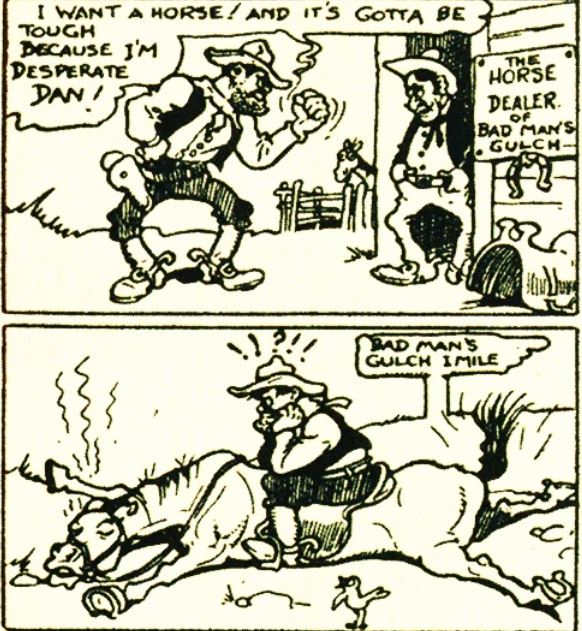
With contemporary strips coming thick & fast the fun is closely followed by two-colour Annual larks involving li’l Dan’s photo-day at ‘Cactusville School’ whilst – happily mining a fresh seam – ‘Desperate Dan’s Schooldays’ (as illustrated by Charles Grigg and first published in the Desperate Dan Annual 1979) gives readers another bucket of whimsical back-story from the big man boyhood as the end approaches.
In 1984, the Biggest Yin made it to the front – and back – of the weekly Dandy covers, displacing Grigg’s Korky the Cat after five straight decades. Here a full colour spread celebrates an anniversary year with a quartet (octet?) of images shouting out fifty years of Desperate astonishment wonder before we unsaddle for the moment with final modern colour feature ‘The Hobbies of Desperate Dan’ as seen in the 1994 Dandy Annual and showing what the term “extreme sports” really means…
Timeless, hilarious and not nearly as tame as you thought, Desperate Dan is a pure paradigm of our lengthy comics glory – and disregard for other people’s culture. Here is a book that – if you’re properly braced and forewarned – will delight and warm your secret, stifled cartoon coloniser’s heart.
© D.C. Thomson & Co Ltd 1997.
Today in 1913 Golden Age artist Charles (Spy Smasher, et al) Sultan was born. In 1943, Metabarons artist Juan Giménez was born. You might also want to peek at A Matter of Time, before celebrating that in 1962 Darwyn Cooke (DC: The New Frontier, Batman: Ego, Parker) joined us for far too short a time.

